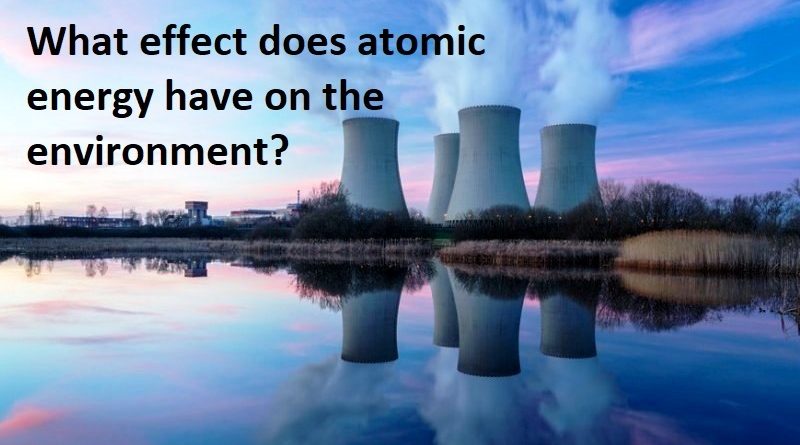What effect does atomic energy have on the environment?
Atomic energy, also known as nuclear energy, can have significant effects on the environment. While atomic energy itself does not contribute to air pollution or greenhouse gas emissions, the production, management, and disposal of nuclear waste can lead to pollution and environmental degradation.
One of the major concerns with atomic energy is the production of nuclear waste. Nuclear waste is highly radioactive and can remain hazardous for hundreds of thousands of years. The disposal of nuclear waste is a significant challenge as it requires safe and secure storage facilities that can contain the waste for an extended period of time. In addition to the risk of accidental release, there is also a risk of contamination of groundwater and surface water, soil, and air.
The management and disposal of nuclear waste have been a major environmental issue for decades. Countries that have nuclear energy programs must have a plan for the safe and secure management of nuclear waste. However, the storage of nuclear waste can be expensive and there are limited options for disposal. For example, in the United States, nuclear waste from power plants is stored in temporary storage facilities and there is no long-term disposal site. This has led to concerns about the safety of storing nuclear waste in temporary facilities and the potential for accidents or leaks.
Another concern with atomic energy is the potential for accidents at nuclear power plants. Accidents can occur due to human error, natural disasters, or mechanical failure. Two of the most significant nuclear accidents in history occurred at the Chernobyl Nuclear Power Plant in Ukraine in 1986 and the Fukushima Daiichi Nuclear Power Plant in Japan in 2011. These accidents resulted in significant environmental damage, including contamination of soil and water, and long-term health consequences for those who were exposed to the radiation.
The use of atomic energy also requires the mining and processing of uranium, which can result in environmental damage. The mining process can cause soil and water contamination, as well as the release of radioactive particles into the air. The processing of uranium also requires large amounts of energy and can produce waste products that are hazardous to the environment.
Additionally, the use of atomic energy can lead to thermal pollution in bodies of water near nuclear power plants. Nuclear power plants generate heat as a byproduct of the nuclear reactions that produce energy. This heat is released into nearby bodies of water, which can lead to changes in water temperature and impacts on aquatic ecosystems.
Lastly, the production of nuclear fuel also requires the use of fossil fuels and other non-renewable resources. For example, the mining and processing of uranium require significant amounts of energy and water. The transportation of nuclear fuel also requires the use of fossil fuels, which can contribute to air pollution and greenhouse gas emissions.
Here are a few additional environmental impacts of atomic energy:
- The production of nuclear fuel and the operation of nuclear power plants can have significant impacts on wildlife and habitat. Nuclear facilities often require large areas of land and can lead to the fragmentation of habitats, which can impact the movement and distribution of wildlife. The construction and operation of nuclear power plants can also result in the loss of wetlands, forests, and other important habitats.
- The transportation of nuclear fuel and waste can pose risks to the environment. Accidents or spills during transport can result in contamination of soil, water, and air. Additionally, the use of fossil fuels for transportation can contribute to air pollution and greenhouse gas emissions.
- Nuclear power plants require large amounts of water for cooling purposes, which can impact aquatic ecosystems. The withdrawal of large amounts of water from nearby bodies of water can lead to the depletion of water resources, and the discharge of heated water back into bodies of water can alter water temperature and impact fish populations.
- The decommissioning of nuclear power plants at the end of their operational lives can also have environmental impacts. The process of dismantling and removing a nuclear power plant can result in the release of radioactive materials and other hazardous substances into the environment.
Overall, while atomic energy can provide a source of low-carbon energy, it also has significant environmental risks and impacts that must be carefully managed. The production, management, and disposal of nuclear waste, as well as the potential for accidents at nuclear power plants, are the most well-known environmental concerns associated with atomic energy. However, other impacts, such as those on wildlife, habitats, and water resources, must also be considered when evaluating the role of atomic energy in a sustainable energy system.





